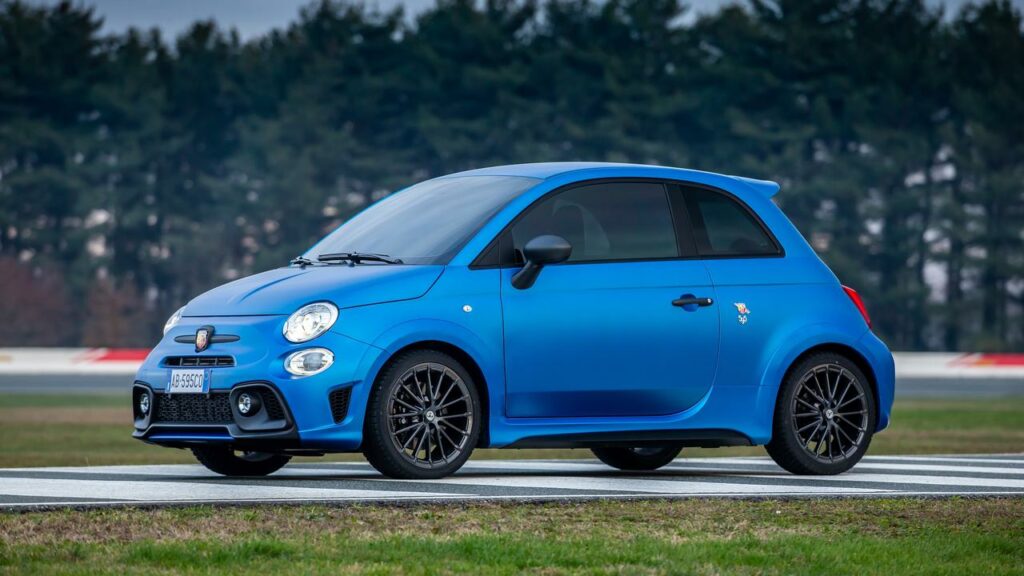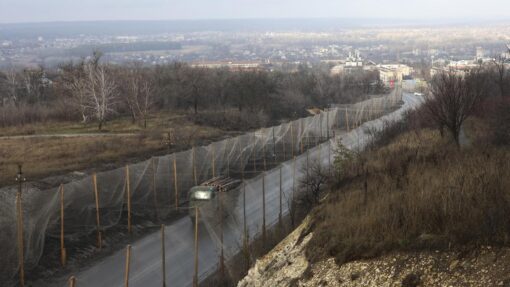Feisty, funky and fun tiny Fiat relative
Peter Atkinson |

Yappy little dogs are particularly common in metropolitan areas.
They bark and snarl and strut around manfully any time another sleepy old mutt wanders their way. Unless that mutt turns out to be a German shepherd or rottweiler – in which case the smaller canine usually backs away.
Meet the automotive version of the yappy dog.
It’s undersized, just like any chihuahua or Jack Russell, and just as feisty.
But this one is from a different litter – Italian to its bootstraps and steeped in that nation’s glorious motoring history.
It’s called the Abarth 595 Competizione and, while it might be unfamiliar, there’s plenty that’s worth hearing about it.
The Abarth began life as a much more mild machine – Italian maker Fiat’s 500 Bambino. Abarth makes racy versions of cars from the Fiat stable – which makes it a sort of second cousin to brands like Ferrari and Maserati.
And while it falls a fair way short of the supercar bracket, this little machine is almost as much fun to drive.
The 595 number reflects its Fiat 500 heritage, while the Competizione reference dates back to the 1960s and 70s when competition was the brand’s bread and butter, mostly in rallying.
So while it might look harmless enough, this little lap-dog certainly has some bite – particularly around corners. And it’s got a decent growl, to boot, with probably the noisiest exhaust system of any car on the Australian market.
The first couple of visits to an underground car park, with generous acoustics, were a surprise. Don’t expect to drive it anywhere unnoticed.
The performance doesn’t quite match the sound, but the 595 is feisty, funky, and probably as much fun as a driver can expect after folding themself into the snug little cockpit.
How small? Well, without leaving the seated position (featuring beautiful bolstered sports seats, by the way) the driver can reach the passenger’s window, and also the glass of the hatchback. No place for claustrophobics.
But what it lacks in size the 595 makes up for in character.
Keep in mind the donor model 500 has been an ornament (not a hood ornament) to the motoring industry for generations with its cutesy appearance, distinctive features and its convenient size.
The Fiat 500 badge has been around for almost 70 years and the relationship with Abarth (and its founder Carlo Abarth) almost as long. So it’s not surprising to see a bit of nostalgia woven into the fibre of the 595.
Carlo started tweaking little Fiats in 1956, when he set speed and endurance records at Monza in his self-named hot rod. The brand had its zenith in the 70s when it starred in European rally championships, and has remained a curiosity for some, a passion for others.
Jump in and those years roll back. It still offers a manual transmission (a bit retro these days) – a five-speed manual at that (seriously retro) – or choose the optional robotized “Duologic” semi-automatic transmission (still more retro) which is available for an extra investment.
The test model was manual and prompted a few complaints, particularly about its tall gearing which made it a breeze to drive in city traffic (third gear was perfect at 60km/h).
While clutch pedals are rarely seen in modern cars, choosing ratios is part of the fun in the Abarth.
The driving experience is probably best compared to the likes of Mazda’s MX-5 and Toyota’s GT86 – both bolted-down go-karts which put the driver very close to the tarmac, almost close enough to touch it and certainly close enough to feel every loose stone and bump.
Being smaller, the Abarth is even more engaging with its tiny wheelbase and rigid chassis.
The Abarth magicians have added some classy touches to this humble little rocket (it costs a modest $32,950 plus on-road costs). The tiny cockpit is generously equipped and beautifully finished in Alcantara which adorns the dashboard; there’s a smart little instrument panel and every control and adjustment is, not surprisingly, in full and easy reach.
Its dimensions most closely resemble those of a spa bath, boasting similar comfort levels but considerably more grip.
It gets all the Italian performance goodies like Brembo brakes, dual-mode exhaust, and KONI adaptive suspension.
In its recently upgraded guise the 595 is offered in two styles – the coupe tested here and a convertible which adds three grand to the asking price and even more uniqueness to the vehicle.
The car’s performance, when you get right down to it, is pretty remarkable.
The speed limit arrives in about 6.7 seconds – although it sounds and feels much quicker. The 1.4-litre, turbocharged four-cylinder “T-jet” engine develops a smart 132kW and 250Nm.
Its weight and dimensions are roughly the same as a telephone box, meaning that modest powerplant is more than sufficient.
City cars like its donor Fiat 500, are amazingly practical. This one merely expands that practicality from the nine-to-five urban crawl into a machine that also likes to get out on the weekend.
Not everything matches that surprising performance, though.
The driver’s seating position is a little awkward, to say the least. It forces both front-seat passengers (there’s absolutely no room for anyone in the rear pews) to sit quite upright and taller passengers with their heads brushing the roof lining.
It can’t be adjusted much (in fact there’s precious little adjustment in any direction, despite the comfy seats). The result is that drivers feel a bit like Mr Bean when steering.
With the noisy and very conspicuous exhaust note announcing every arrival, it’s not a car for those who’d rather not be noticed. Or pointed at.
Others will enjoy the attention, but it’s something buyers need to be aware of.
The Abarth’s doors are surprisingly large by comparison to the car’s other dimensions. No drama, except it means sometimes after finding a nice, tight little parking spot, it’s impossible to open the door to get out.
Which is maybe fitting, because getting out of the 595, both physically and emotionally, is not easy.
ABARTH 595 COMPETIZIONE
* HOW BIG? Tiny. Just as well good things come in small packages.
* HOW FAST? It’s quite a little rocket, particularly for its modest dimensions, and loud. It will do the 0-100km/h spring in a brisk 6.7 seconds.
* HOW THIRSTY? Despite some vigorous driving the test car managed in the range of 6.5L/100kmh.
* HOW MUCH? The coupe tested here starts at $32,950 (plus on road costs).
AAP


